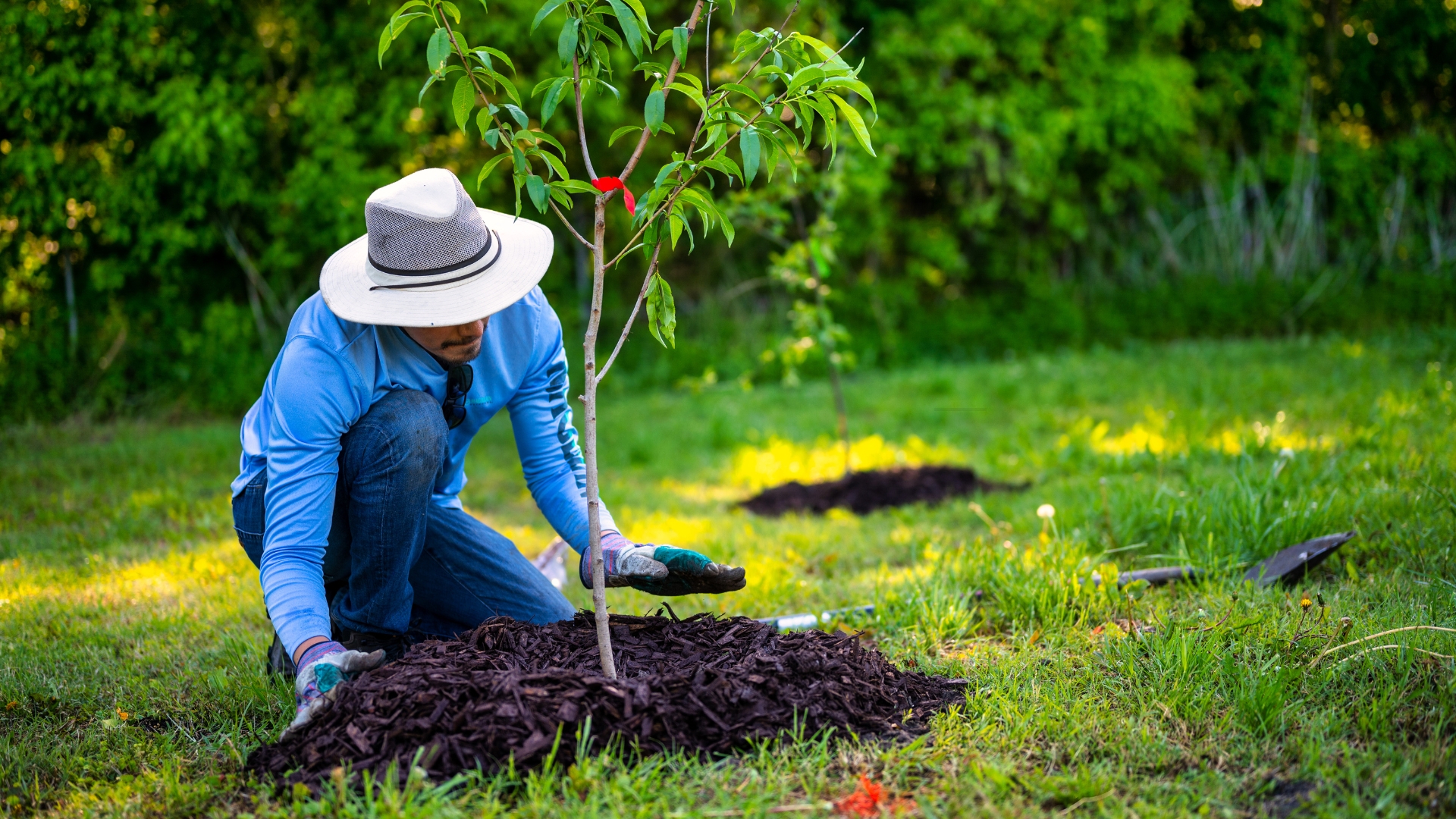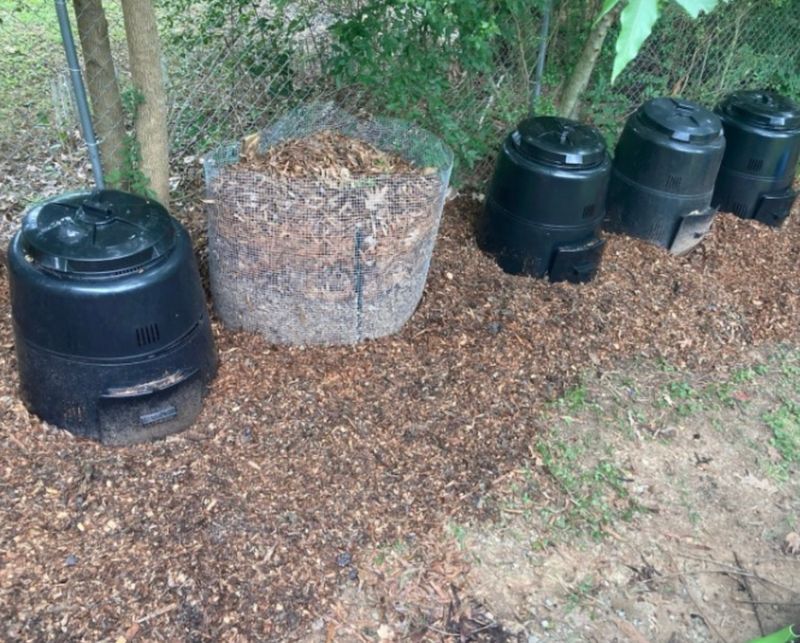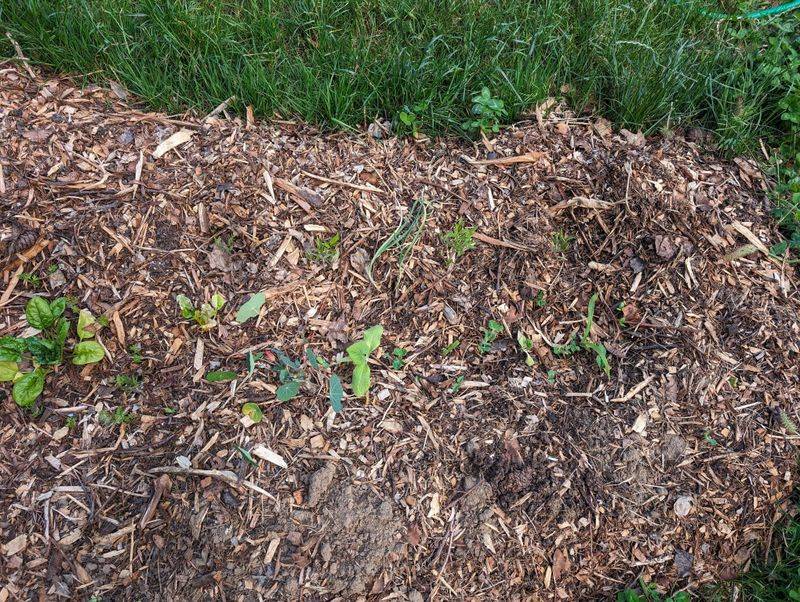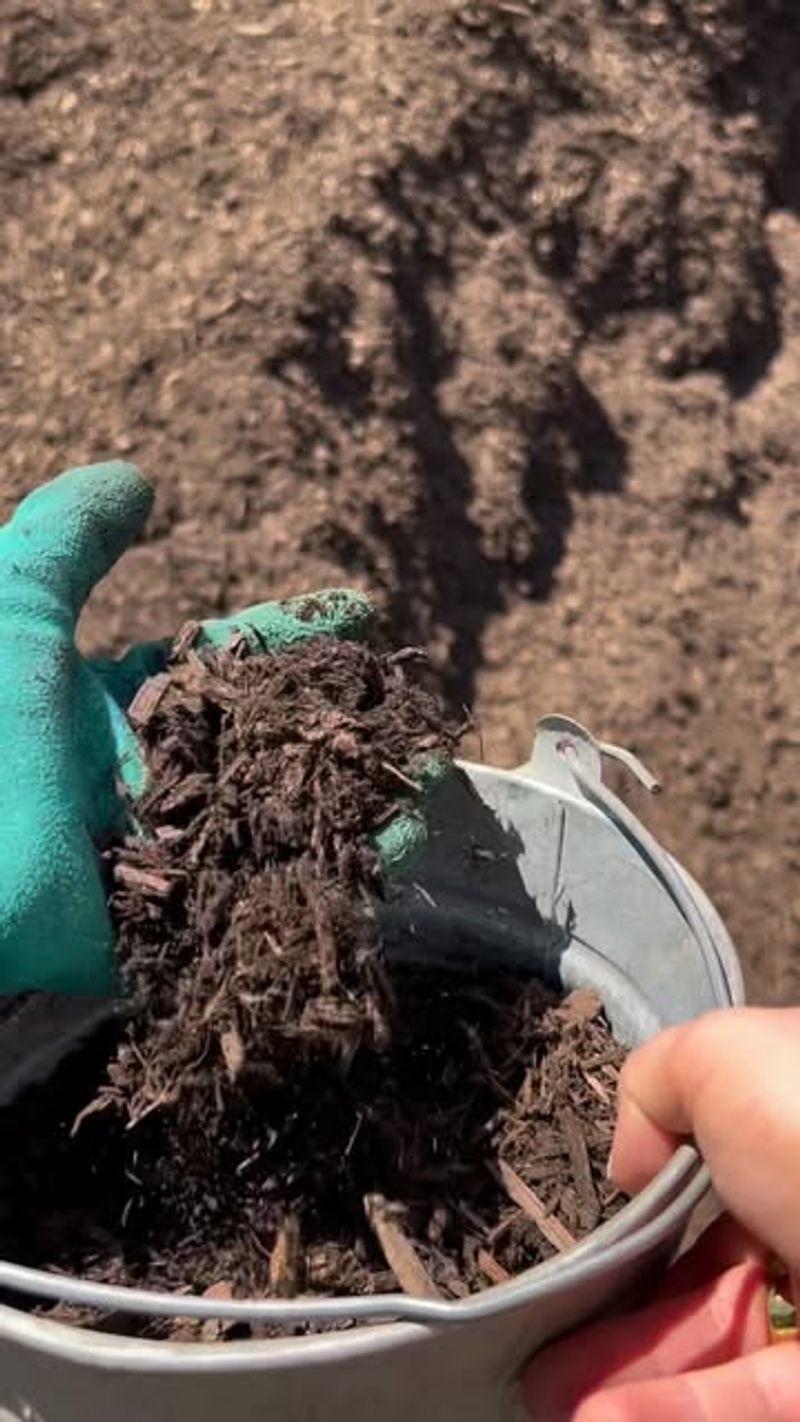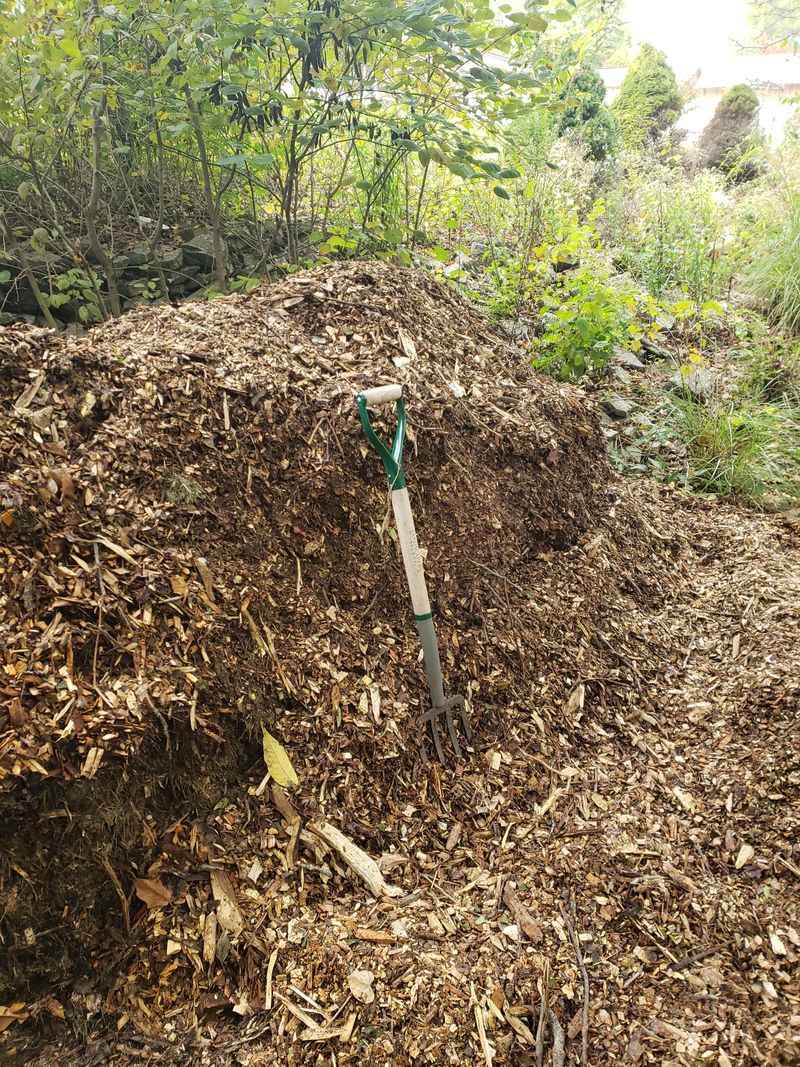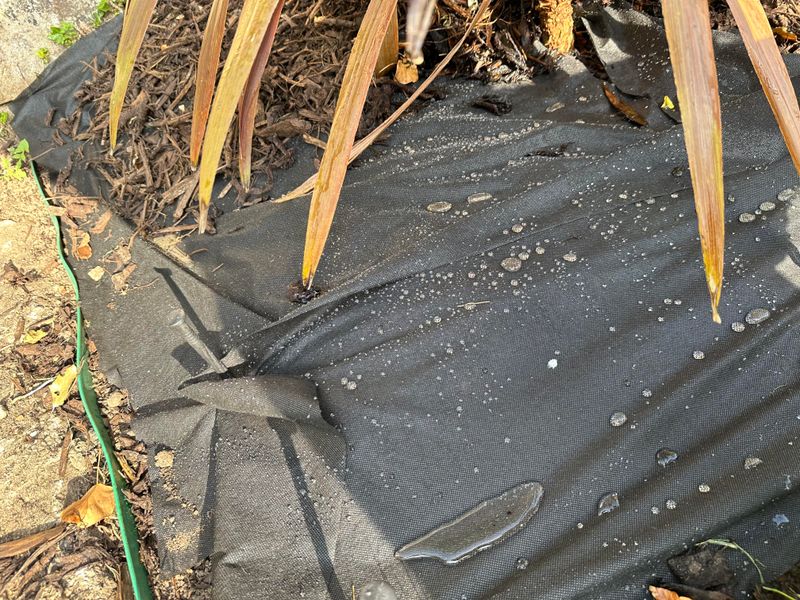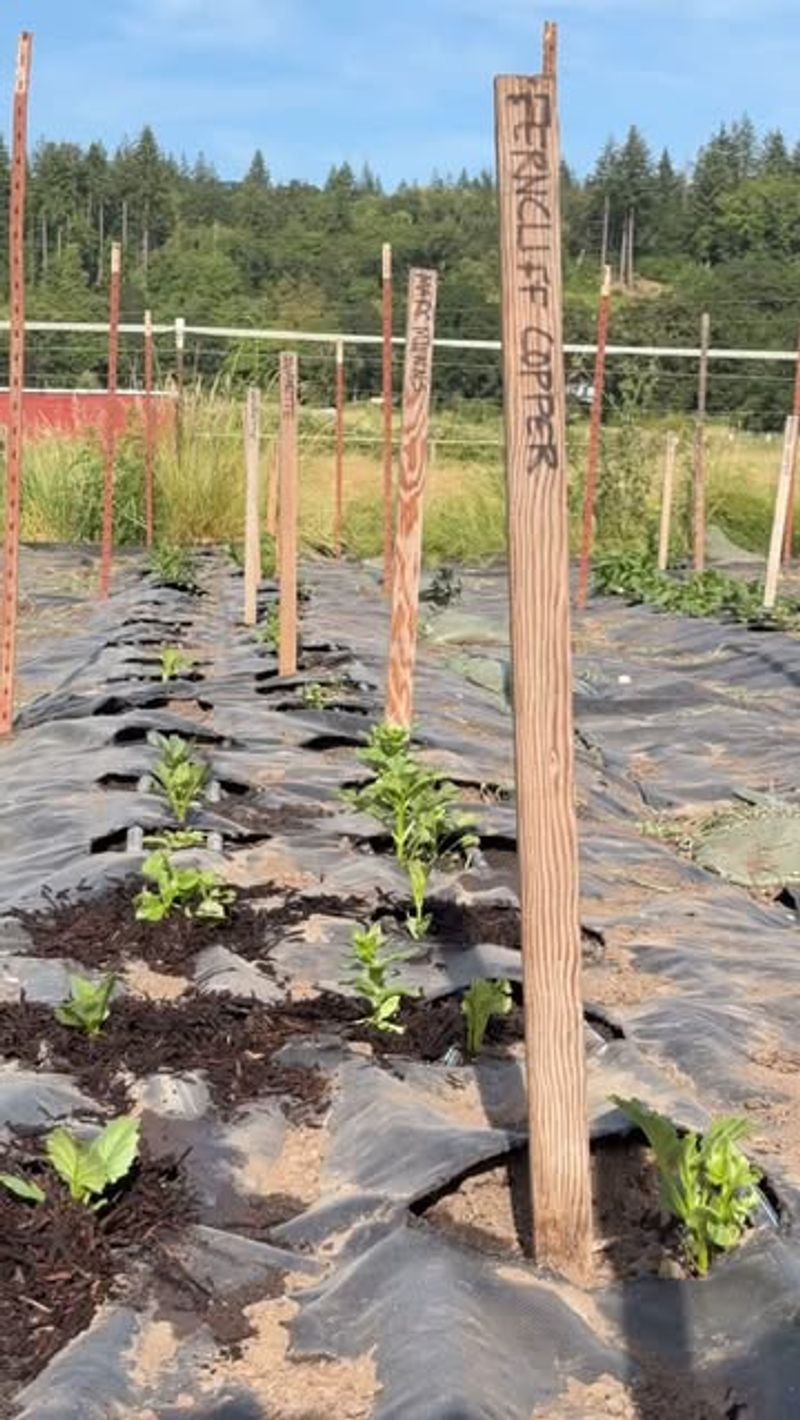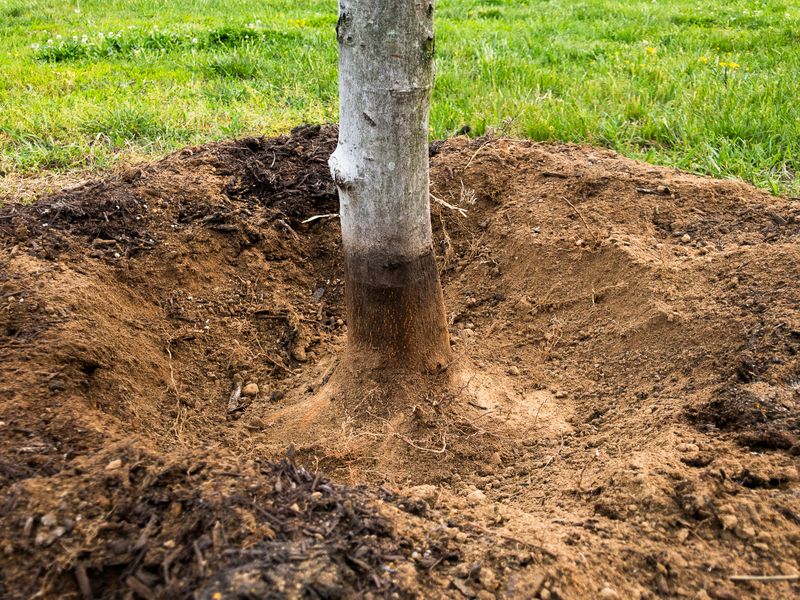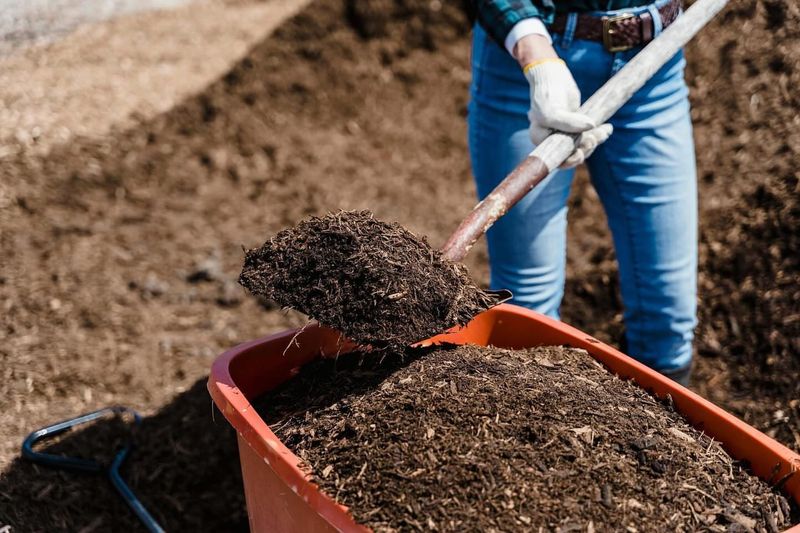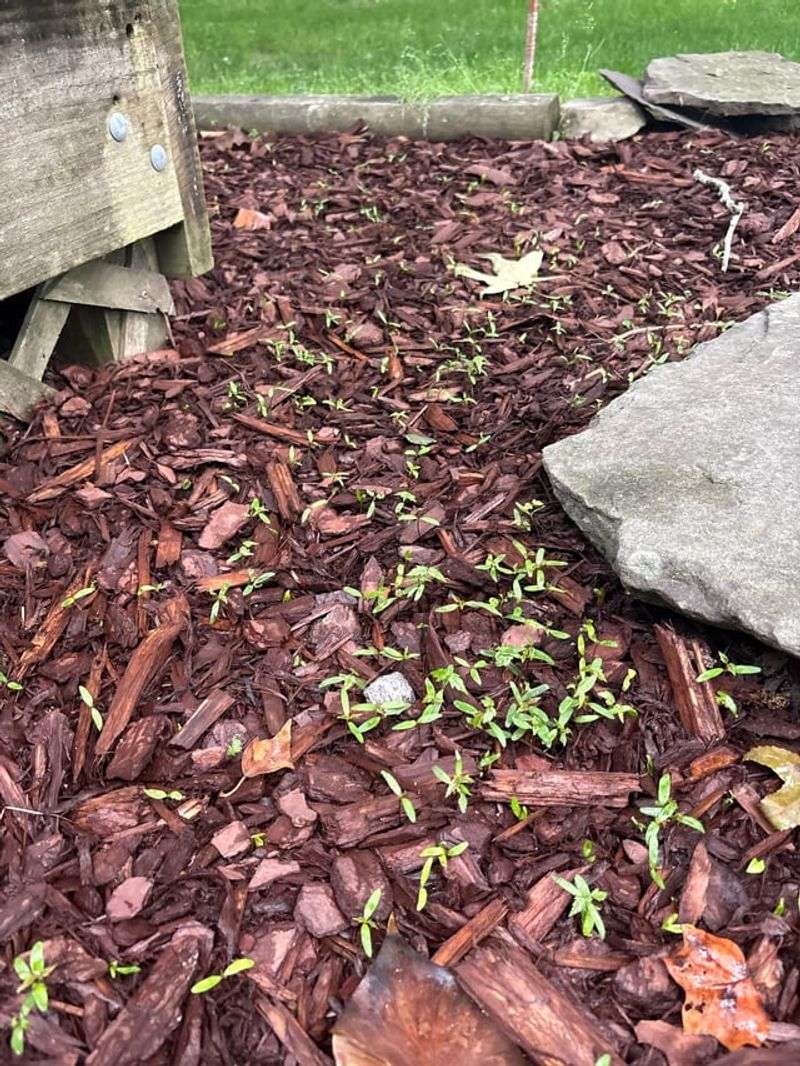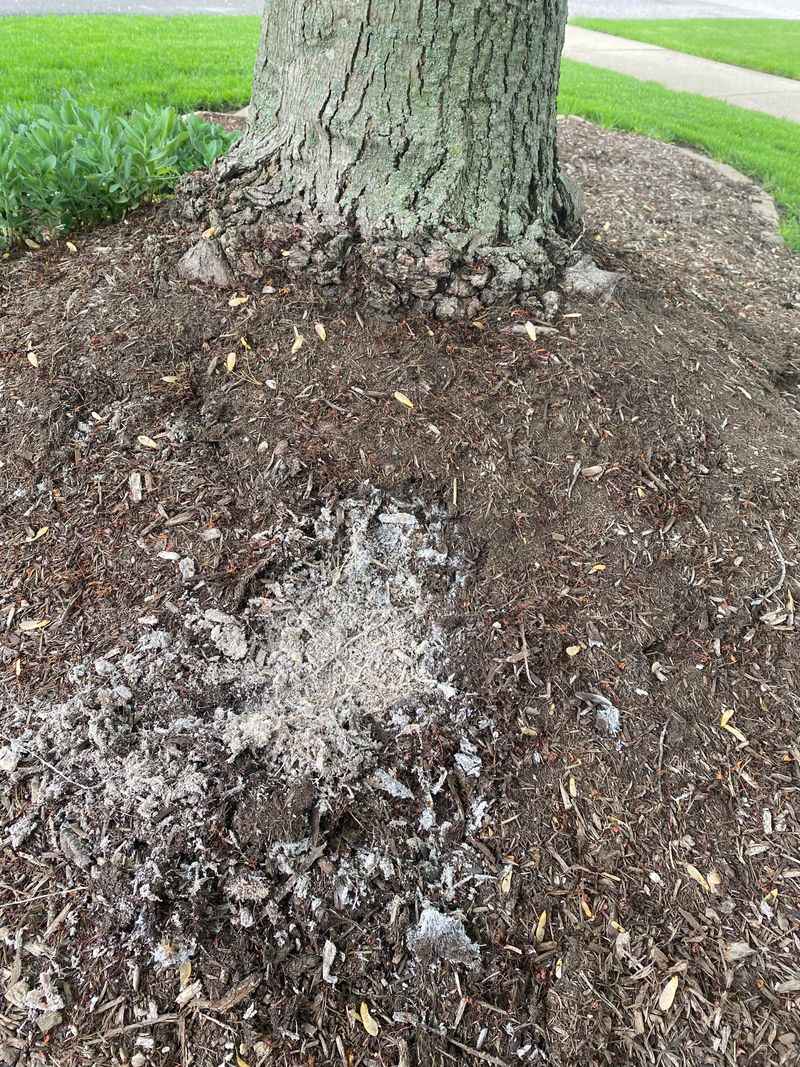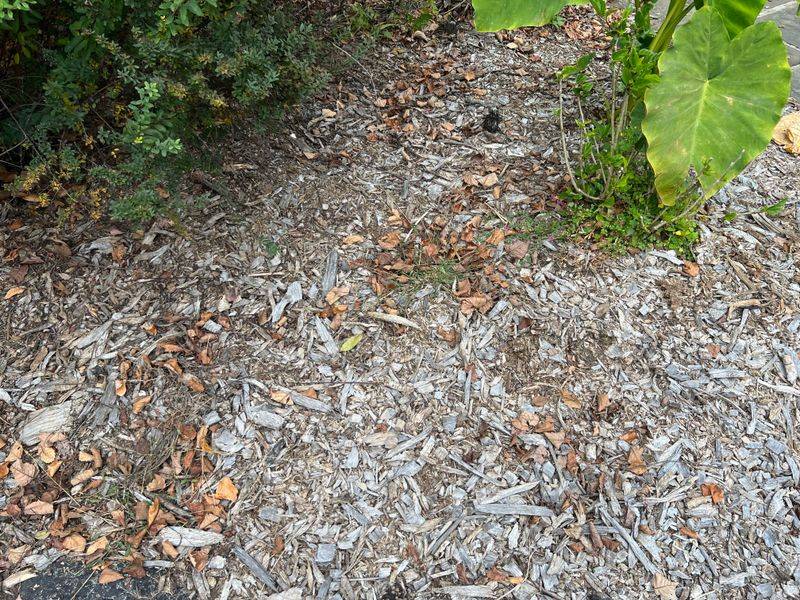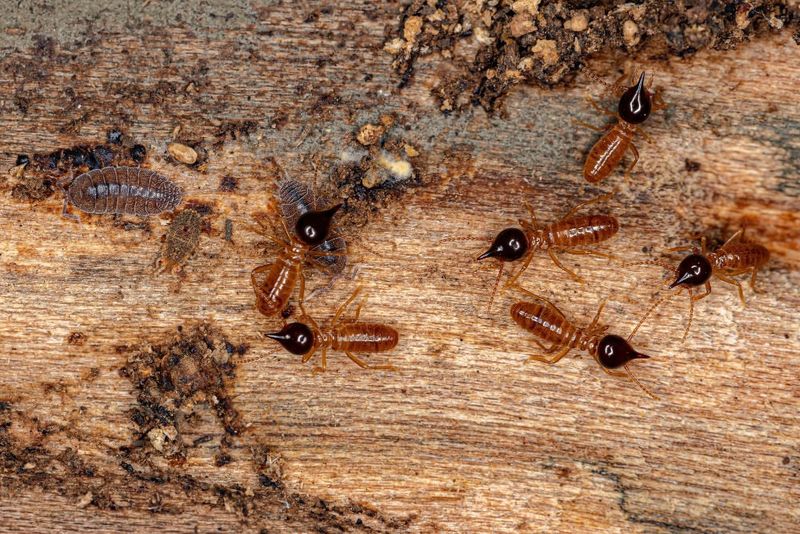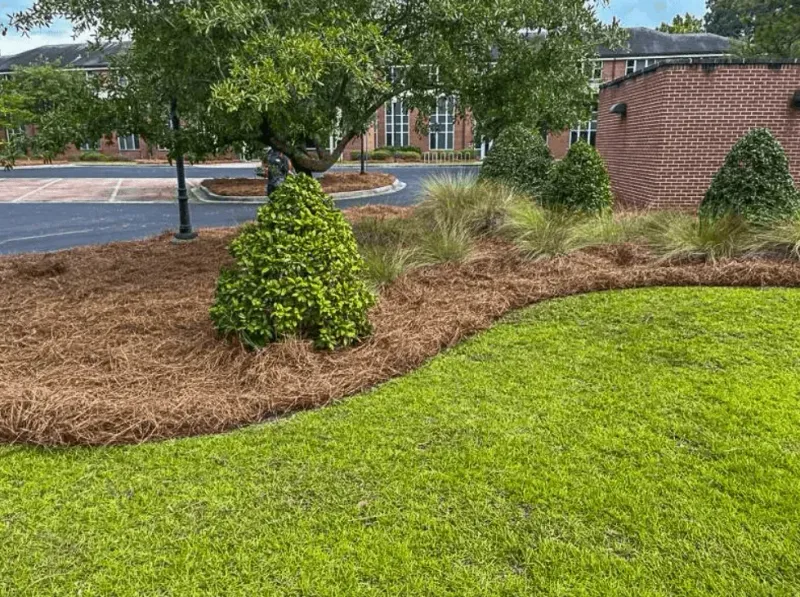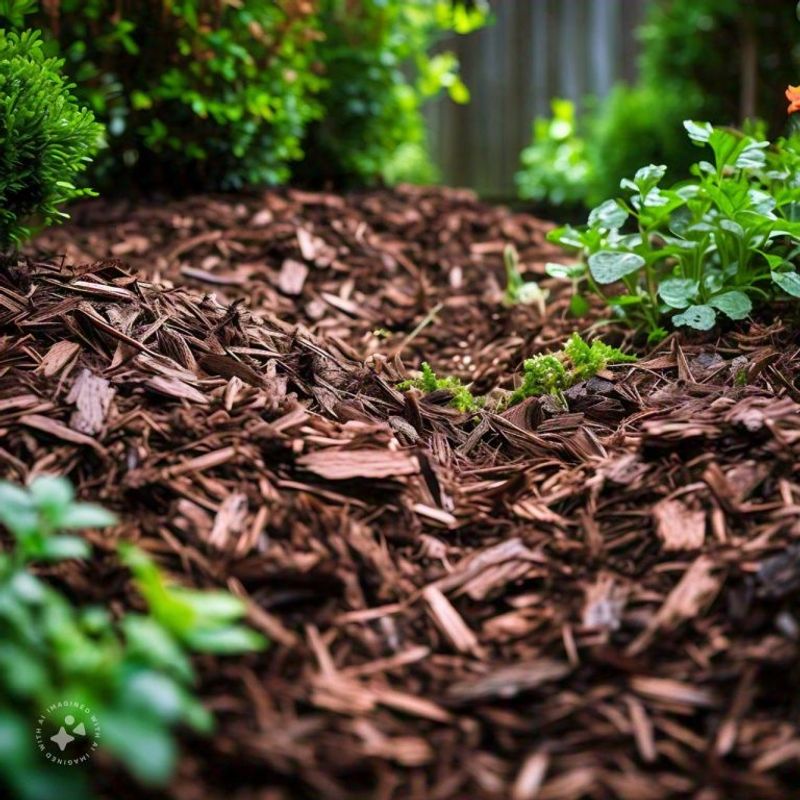Mulching has become a standard yard care practice across America, with homeowners piling it around trees and gardens without question. What many don’t realize is that improper mulching techniques can seriously damage your plants and soil health.
The problems range from suffocating root systems to creating pest havens that undermine your yard’s ecosystem.
1. Volcano Mulching Suffocates Tree Roots
Piling mulch high against tree trunks creates what experts call ‘mulch volcanoes.’ These mounds prevent oxygen from reaching roots and trap moisture against bark, leading to rot and decay.
The solution is simple: keep mulch at least 3-6 inches away from tree trunks and limit depth to 2-3 inches. Think donut, not volcano! Pull existing mulch away from trunks and spread it evenly in a circle around trees.
2. Excess Mulch Creates Pest Havens
Thick mulch layers become perfect hideouts for harmful insects and rodents. Mice, voles, and termites love the moist, protected environment deep mulch provides, turning your garden into their personal playground.
Maintain mulch at a maximum 2-3 inch depth to discourage pests. Regularly rake and fluff existing mulch to disturb any creatures setting up home. For severe infestations, remove old mulch completely before applying a thinner layer.
3. Chemical Dyes Contaminate Soil
Those vibrant red and black mulches get their color from chemical dyes, often containing harmful compounds. These chemicals can leach into soil, affecting plant health and eventually reaching groundwater.
Switch to natural, undyed mulch options like pine straw, cedar, or cypress. They break down naturally without adding chemicals to your yard. If appearance matters, consider cocoa hull mulch which has a naturally rich color without artificial dyes.
4. Moisture Imbalance Damages Plants
Overmulching creates extreme moisture conditions in soil. During wet periods, excess mulch acts like a sponge, holding too much water and drowning roots. In drought, thick mulch can actually repel water, preventing it from reaching thirsty plants.
Apply mulch in proper 2-3 inch layers and monitor soil moisture regularly. Pull mulch back slightly during extremely wet periods. Create slight depressions around plants to funnel water through mulch during dry spells.
5. Nutrient Lockout From Wrong Materials
Fresh wood chips and sawdust steal nitrogen from soil as they decompose. Plants surrounded by these materials often yellow and struggle to grow as the mulch robs them of essential nutrients.
Age wood chips for at least six months before using as mulch. For existing gardens with fresh wood mulch, apply nitrogen fertilizer to compensate for what’s being consumed. Better yet, use leaf mold or compost as mulch – they add nutrients rather than stealing them.
6. Barrier Formation Prevents Water Penetration
Old mulch often forms a crusty, water-repellent barrier. Water runs off instead of soaking in, leaving plants thirsty even after rain or irrigation. This matted layer also blocks air exchange, suffocating soil life.
Break up compacted mulch with a garden fork or rake at least twice yearly. Never add new mulch over old, matted layers. Remove and replace mulch completely every few years to prevent barrier formation and encourage healthy soil biology.
7. Root Suffocation From Plastic Barriers
Many gardeners place plastic sheets under mulch to block weeds, creating a suffocation hazard for plants. Roots need oxygen, and plastic barriers prevent proper gas exchange while trapping excess moisture.
Replace plastic with permeable landscape fabric if a barrier is necessary. Better yet, use newspaper or cardboard as a biodegradable weed barrier that will eventually break down. Make sure to overlap sheets and wet them before applying mulch on top.
8. Fungal Disease Promotion
Mulch piled against stems creates perfect conditions for fungal diseases. The constant moisture against plant tissue leads to rot, while fungal spores in mulch can splash onto leaves during rain.
Create a 2-3 inch gap between mulch and plant stems or trunks. For existing problems, remove affected mulch and allow the area to dry out. Consider applying a thin layer of cinnamon around plant bases – it has natural antifungal properties.
9. Soil Temperature Extremes
Excessive mulch creates abnormal soil temperatures. In summer, thick mulch can actually cook roots by trapping heat, while in winter, it may delay soil warming, stunting spring growth.
Adjust mulch depth seasonally – thinner in spring to allow soil warming, slightly thicker in summer for moderate insulation. Pull mulch away from plants during cool, wet periods. Consider removing some mulch entirely in early spring to help soil warm faster.
10. Weed Seed Contamination
Bargain mulch often contains weed seeds that turn your weed prevention strategy into a weed propagation program. Low-quality products may harbor thousands of viable seeds just waiting to sprout.
Purchase mulch from reputable suppliers who properly compost their materials. Heat-treated mulch kills most weed seeds. For existing contaminated mulch, apply corn gluten meal as a natural pre-emergent herbicide to prevent seeds from sprouting.
11. Alkalinity Issues From Wood Ash Mulch
Wood ash used as mulch dramatically raises soil pH, creating alkaline conditions that many plants can’t tolerate. Acid-loving plants like azaleas and blueberries particularly suffer, developing yellow leaves and stunted growth.
Test soil pH before and after mulching. Avoid wood ash around acid-loving plants entirely. If pH has already risen, apply elemental sulfur or aluminum sulfate according to package directions to gradually lower pH back to appropriate levels.
12. Toxic Mulch Syndrome Kills Plants
Improperly stored mulch can ferment, creating alcohol and organic acids toxic to plants. This ‘sour mulch’ emits a vinegar or ammonia smell and can kill plants within days of application.
Smell mulch before buying – it should have an earthy, not sour odor. Spread suspicious mulch in a thin layer on a tarp for several days to allow harmful compounds to dissipate. If plants show sudden wilting after mulching, remove the mulch immediately and rinse the soil.
13. Termite Attraction To Home Foundations
Mulch placed against home foundations creates a bridge for termites to enter your house. These wood-destroying insects use mulch as both food source and protected highway directly to your biggest investment.
Maintain a 6-12 inch mulch-free zone between any wood mulch and your foundation. Consider using non-wood alternatives like river rock or rubber mulch near the house. Regular inspection of foundation areas for termite tubes is essential regardless of mulch type.
14. Soil Acidification From Pine Mulch
Pine needle and pine bark mulch gradually acidify soil as they decompose. While great for acid-loving plants, this can severely stress plants that prefer neutral or alkaline conditions.
Match mulch type to plant needs – pine products for acid-lovers like rhododendrons, and hardwood mulch for plants preferring neutral pH. Test soil regularly when using pine mulch and apply garden lime if needed to counteract acidification for sensitive plants.
15. Anaerobic Soil Conditions
Overmulching prevents oxygen from reaching soil microorganisms, creating anaerobic (oxygen-free) conditions. This kills beneficial bacteria and fungi while promoting harmful ones that produce alcohols toxic to plants.
Limit mulch depth to 2-3 inches maximum. Periodically rake existing mulch to incorporate air. Consider adding earthworms to mulched areas – they create tunnels that improve air circulation. In severe cases, remove mulch completely and allow soil to “breathe” before reapplying properly.

